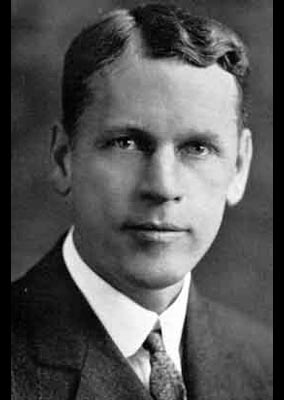Oswald Veblen (nonfiction): Difference between revisions
No edit summary |
No edit summary |
||
| (One intermediate revision by the same user not shown) | |||
| Line 4: | Line 4: | ||
He proved the Jordan curve theorem in 1905; while this was long considered the first rigorous proof, many now also consider Jordan's original proof rigorous. | He proved the Jordan curve theorem in 1905; while this was long considered the first rigorous proof, many now also consider Jordan's original proof rigorous. | ||
He published a paper in 1912 on the [[Four color theorem (nonfiction)|four-color conjecture]]. | |||
During World War I, Veblen served first as a captain, later as a major in the army. | During World War I, Veblen served first as a captain, later as a major in the army. | ||
| Line 24: | Line 26: | ||
== Nonfiction cross-reference == | == Nonfiction cross-reference == | ||
* [[E. H. Moore (nonfiction)]] | * [[Alonzo Church (nonfiction)]] - Doctoral student | ||
* [[E. H. Moore (nonfiction)]] - Doctoral advisor | |||
* [[Four color theorem (nonfiction)]] | |||
* [[Harold Hotelling (nonfiction)]] - Doctoral student | |||
* [[Henry Roy Brahana (nonfiction)]] - Doctoral student | |||
* [[Howard Hawks Mitchell (nonfiction)]] - Doctoral student | |||
* [[James Waddell Alexander II (nonfiction)]] - Doctoral student | |||
* [[J. H. C. Whitehead (nonfiction)]] - Doctoral student | |||
* [[Mathematician (nonfiction)]] | * [[Mathematician (nonfiction)]] | ||
* [[Owen Willans Richardson (nonfiction)]] - Brother-in-law | |||
* [[Philip Franklin (nonfiction)]] - Doctoral student | |||
* [[Robert Lee Moore (nonfiction)]] - Doctoral student | |||
External links: | External links: | ||
Latest revision as of 08:39, 20 November 2017
Oswald Veblen (June 24, 1880 – August 10, 1960) was an American mathematician, geometer and topologist, whose work found application in atomic physics and the theory of relativity.
His dissertation, A System of Axioms for Geometry, was written under the supervision of E. H. Moore.
He proved the Jordan curve theorem in 1905; while this was long considered the first rigorous proof, many now also consider Jordan's original proof rigorous.
He published a paper in 1912 on the four-color conjecture.
During World War I, Veblen served first as a captain, later as a major in the army.
Veblen taught mathematics at Princeton University from 1905 to 1932. In 1926, he was named Henry B. Fine Professor of Mathematics. In 1932, he helped organize the Institute for Advanced Study in Princeton, resigning his professorship to become the first professor at the Institute that same year. He kept his professorship at the Institute until he was made emeritus in 1950.
Veblen made important contributions in topology and in projective and differential geometries, including results important in modern physics. He introduced the Veblen axioms for projective geometry and proved the Veblen–Young theorem. He introduced the Veblen functions of ordinals and used an extension of them to define the small and large Veblen ordinals.
In World War II he was involved in overseeing ballistics work at the Aberdeen Proving Ground that involved early modern computing machines, in particular supporting the proposal for creation of the pioneering ENIAC electronic digital computer.
Veblen died in Brooklin, Maine, in 1960 at age 80. After his death the American Mathematical Society created an award in his name, called the Oswald Veblen Prize in Geometry. It is awarded every three years, and is the most prestigious award in recognition of outstanding research in geometry.
In the News
Fiction cross-reference
Nonfiction cross-reference
- Alonzo Church (nonfiction) - Doctoral student
- E. H. Moore (nonfiction) - Doctoral advisor
- Four color theorem (nonfiction)
- Harold Hotelling (nonfiction) - Doctoral student
- Henry Roy Brahana (nonfiction) - Doctoral student
- Howard Hawks Mitchell (nonfiction) - Doctoral student
- James Waddell Alexander II (nonfiction) - Doctoral student
- J. H. C. Whitehead (nonfiction) - Doctoral student
- Mathematician (nonfiction)
- Owen Willans Richardson (nonfiction) - Brother-in-law
- Philip Franklin (nonfiction) - Doctoral student
- Robert Lee Moore (nonfiction) - Doctoral student
External links:
- Oswald Veblen @ Wikipedia
